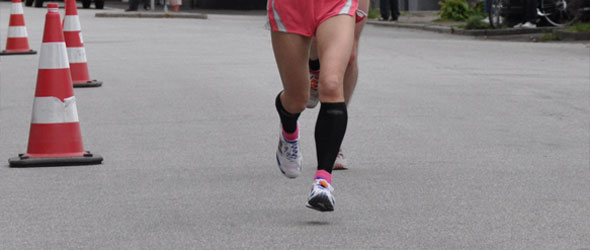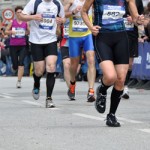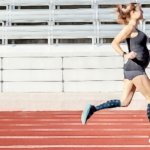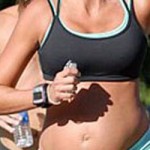 Welcome to the 2nd part of information on Running Socks presented under the ‘women’s section’ of Time-to-Run international.
Welcome to the 2nd part of information on Running Socks presented under the ‘women’s section’ of Time-to-Run international.
– Cassandra Davis Women’s Editor
Sock it! continued
A good fit
Proper fitting of athletic footwear is critical for comfort, injury prevention, and performance. The new high-tech sock products make choosing the right size more of a headache. You should make sure you take along a pair of your running socks when trying on your running shoes. Thick, double layer or even new socks can make that your shoes tighter squeeze, causing either pressure or friction, and you got it – blisters!
Socks that have an elasticated band over the middle of the foot can also cause metatarsal pain. Likewise, tight ankle socks can cause discomfort and even Achilles tendonitis. Tube socks are not recommended as your feet are not tube shaped, and will not fit right.
Choice of length and comfort
Over-the calf: These are typically the types of socks footballers wear. Usually they are not adapted for running. However the new compression over-the-calf socks are an exception, see full description below.
Mid-calf/crew: This length of sock is often favoured by male runners, probably because they do not flatter women runners legs, unless under leggings in winter!
Ankle length/quarter: This is the most classical running type of sock.
Anklet socks or liners: Anklets have become extremely popular especially with women runners. This is because they have become a fashion statement and because they prevent unsightly sock tans. The drawback is that they can creep into the shoe if they don’t fit properly or loose their shape in the wash.
If you suffer from blisters you might want to experiment with sock thickness. If your socks are so thick that your toes have no room, you need bigger shoes or thinner socks. Double layer socks may be the answer to preventing blisters. The inner layer should be of a wicking fabric. The two layers work to prevent friction on the foot itself. Some double layer socks, come with a no-blister guarantee. Alternatively, you can also wear two pairs of socks.
In winter, especially in cold climates the thermal-insulation quality of the sock is critical. New synthetic fibres composed of a hollow core material known as Thermax® have been shown to effectively insulate against heat loss. Natural wool fiber socks are still unbeatable for maintaining heat while wet. However, the abrasive nature of 100% wool fiber socks makes these more comfortable if blended with other high-tech synthetic fibre materials.
The classical cotton socks retain foot sweat, which soften the skin, leaving it more prone to breaking with friction, and blisters form. Synthetic socks made of acrylic, polypropylene, or CoolMax fabric wick moisture away from the foot, keeping them dry. These are available at most sports stores.
The following choices of fibres exist on the market:
Acrylic: Not usually recommended for running
Acrylic/Wool: Outdoor-Cold
Acrylic/Thermax®: Outdoor-Cool
Acrylic/CoolMax®: Outdoor-Warm
CoolMax®: Running
The trend towards compression socks
Your muscles work on oxygen which is transported via the blood pumped from your heart through arteries and viens. During intensive sport your heart rate rises to feed the muscles. This causes the calves to absorb blood very rapidly and because the calf muscles are situated at some distance from the heart and lungs, this can cause difficulty for the blood to evacuate effectively and result in an inadequate oxygenation of the muscles resulting in heaviness, fatigue and cramps and a reduction in performance. Women are especially prone to venous problems and might find these socks the answer.
Compression sports socks exert a slight pressure around the foot and ankle and calf which limits the dilation of the calf muscle and helps oxygenation, reducing risk of injury (tendonitis, muscle tears etc.). During training these socks can help improve performance and wearing them after effort can aid and accelerate recuperation.
Tips:
Do not sleep with socks on,
Use during long transportation trips, car, aeroplane etc.
Make sure that the socks are tailored to your specific measurement for maximum efficacy.
Further Running Sock information – Sock it!
contributor Cassandra Davis
































